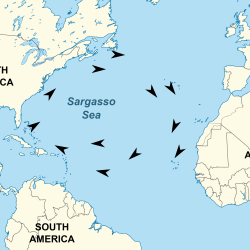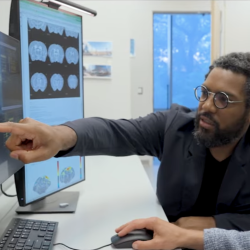Updates on The Fight to Save Amphibians
Press briefing at the 2016 AAAS Annual Meeting describes efforts to save frogs and salamanders from deadly fungal diseases
On January 12, 2016, the U.S. Fish and Wildlife Service imposed a ban on the import and interstate transport of 201 species of salamanders, in an effort to prevent the deadly fungal pathogen Batrachochytrium salamandrivorans (Bsal) from reaching the United States. First discovered in the Netherlands in 2013, Bsal was found to have hitched a ride on Asian salamanders imported to Europe as pets. While some salamander species worldwide are resistant to Bsal, many European and North American salamanders—which did not co-evolve with the fungus—seem to be more susceptible to infection.
Bsal has not yet arrived in North America, and scientists and regulators want to keep it that way for as long as possible—especially until more is known about the deadly disease. At a press briefing at the Annual Meeting of the American Association for the Advancement of Science (AAAS) on February 11, 2016, leading amphibian researchers from the University of Maryland, San Francisco State University and the University of Puerto Rico discussed lessons learned from efforts to study and control Batrachochytrium dendrobatidis (Bd), a closely related fungus that has already exacted a severe toll on worldwide frog populations.
“North America is home to the highest number of salamander species in the world. They are a vital and irreplaceable component of our forest ecosystems,” said Karen Lips, a professor of biology at UMD and organizer of the related scientific session at the AAAS meeting. Lips also spoke at the press briefing on February 11. “Bsal is the latest invasive pathogen to threaten our native wildlife, but it will certainly not be the last. Both Bd and Bsal are examples of a much bigger, global-scale problem.”
First discovered in the late 1990s, Bd has been discovered infecting amphibians on all continents except Antarctica. While this epidemic has resulted in high losses, it has also revealed much about why and how some amphibians are resistant to infection, and what sort of environmental conditions exacerbate the spread of the disease.
Speakers at the briefing reviewed the state of knowledge on fungal disease in amphibians, including the discovery new fungal pathogens as well as some genetic responses and certain types of skin bacteria that can guard against Bd infection. In some cases, these defenses cause certain amphibian species to act as vectors, capable of tolerating the fungus while spreading it to other more susceptible hosts. The researchers also discussed the role of climate, including the preferred range of temperature and moisture most likely preferred by Bd, Bsal and other related fungal pathogens.
###
Press Briefing:
Thursday, February 11, 2016, 2:15 – 3:15pm
Virginia Room
Marriott Wardman Park Hotel
2660 Woodley Road NW
Washington, DC 20008
Scientific Session: “Advancing Knowledge of Global Amphibian Decline with International Collaboration”
Friday, February 12, 2016, 8:00 – 9:30am
Harding Room
Marriott Wardman Park Hotel
2660 Woodley Road NW
Washington, DC 20008
- Karen Lips, University of Maryland
Session Organizer and Discussant - Ana V. Longo, University of Maryland
Global Collaborative Responses in Responding to Amphibian Chytridiomycosis - Patricia Burrowes (Co-organizer), University of Puerto Rico
How Synergies Influence the Response of Amphibians to Disease - Vance Vredenburg, San Francisco State University
Role of Natural History Collections and Zoos in Understanding Emerging Wildlife Diseases
###
Media Relations Contact: Matthew Wright, 301-405-9267, mewright@umd.edu
University of Maryland
College of Computer, Mathematical, and Natural Sciences
2300 Symons Hall
College Park, MD 20742
www.cmns.umd.edu
@UMDscience
About the College of Computer, Mathematical, and Natural Sciences
The College of Computer, Mathematical, and Natural Sciences at the University of Maryland educates more than 7,000 future scientific leaders in its undergraduate and graduate programs each year. The college's 10 departments and more than a dozen interdisciplinary research centers foster scientific discovery with annual sponsored research funding exceeding $150 million.







